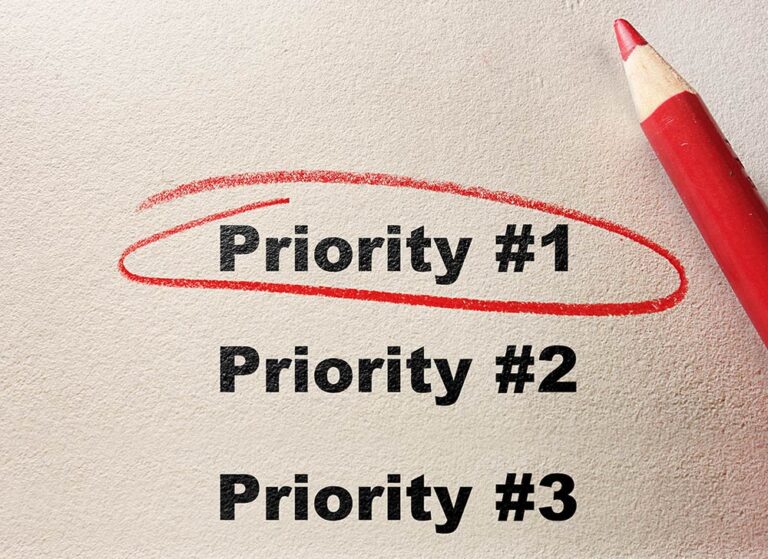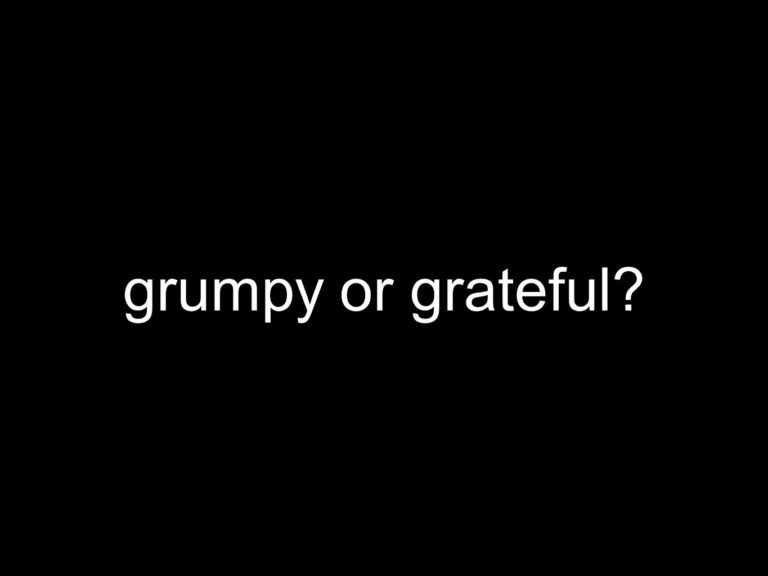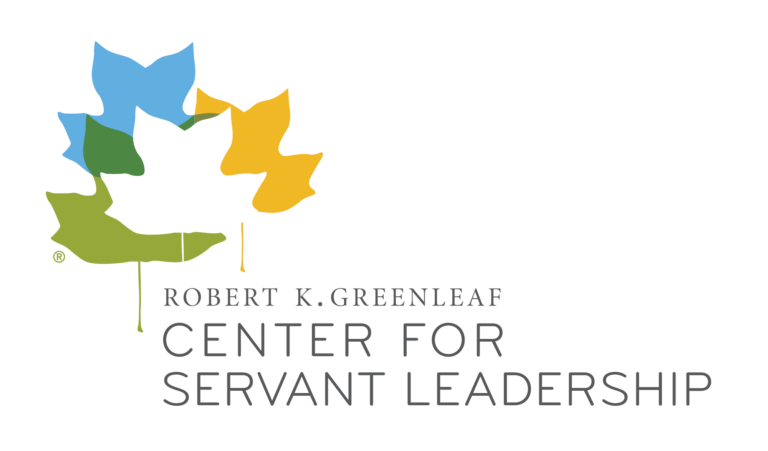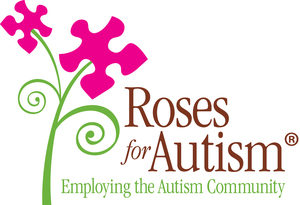Authentically Speaking
Ponderings on Leadership, What Matters Most, Business Relationships, Critical Skills and Community

Consider the Wisdom of Building Your Own Tribe(s)
I enjoy engaging with people, but I also value my alone time. I am selectively involved in groups I care about, but I have never been a very good joiner or follower. Maybe, it is because of my high-functioning introvert personality or stubborn independence which I have been self-aware about

A Practical Approach to Investing in the Next Generation of Leaders
On one occasion I asked my father what he thought a good definition of leadership was. He said, “Leadership is communicating to another person their worth and potential so clearly they are inspired to see it in themselves.” – Stephen R. Covey, Primary Greatness I have the privilege of speaking

Seven Best Practices for Reframing Your Thinking
I found myself advising a coaching client recently to reframe his thinking on a certain issue that challenged him. We went through a litany of possible approaches to help him see his issue from different perspectives that opened the aperture of his thinking and he said the conversation was very

Five Traits of a Thoughtful Leader
Thoughtfulness is the intersection of deep reflection and broad concern for others. – Adam Grant My newest book, Becoming a More Thoughtful Leader, was never intended to be the defining gold standard for how leaders can be the masters of thoughtfulness in their daily work. It is not a novel

Leaders Who Coach are the Key to Driving Better Engagement
I enjoy reflecting on the numerous conversations I have had over the years with clients and friends from my business network. One of the topics that has frequently been popping up is growing concern about how to help team members feel more engaged at work. The May 2024 Gallup surveyon workplace

Turning Our Vulnerabilities into Something Positive
If you are reading this post, you are human. You are imperfect, just like me and everyone else you know. I hope you will embrace the obvious truth of this, but also recognize how most of us are fearful of letting people see our flaws and imperfections…even though we know

Thoughts on Repairing Your Personal Brand
Have you ever had a problem with your personal brand at work? Here is a true and somewhat genericized story (and a very common tale) I am sharing with permission. I was talking to a senior leader not long ago about struggles he was having with a lingering personal brand

Confessions of a High-Functioning Introvert
Decades ago when I was still in school, I used to feel anxious and uncomfortable around large groups of people. As I grew older, the obligatory networking events I was told to attend to benefit my career were especially difficult for me and I often felt overwhelmed by the idea of

Are You Having the Right Accountability Conversations?
In my professional work, I often look for interesting patterns of behavior and recurring themes. I was reflecting this morning on a conversation I had four months ago with a past senior executive coaching client who reached out for advice about a direct report on her team who was promoted

Let’s Talk More About “Opportunity”
I was speaking with a senior executive friend recently about the challenges of attracting, motivating and retaining talent in her company. She described at great length the generous benefits and perks offered by her organization to future and current employees and it felt a bit overwhelming to consider all you would

Moving the Needle on Accountability
A common and pervasive challenge with leaders I encounter each week is their frustration with the lack of consistent accountability from their teams. We acknowledge it is a problem, but we typically struggle to address it in practical and meaningful ways. Maybe there is a great book out there with all

What if We Viewed Time as a Gift?
Dost thou love life? Then do not squander time, for that is the stuff life is made of. —Benjamin Franklin Time is a finite resource and we only have so much of it to harness and share. As I encounter other busy professionals, I am always struck by the common struggle we

Workspace Matters
I was thinking this morning about an email I received Friday from a former coaching client who I worked with in 2019. The email simply read: “I can’t thank you enough for the helpful advice. I made a lot of the changes you recommended and it has made a significant difference

Making an Impact, Four Questions & a Different New Year’s Resolution
As I typically do at the end of every year, I spent some time early this morning thinking about 2022, lessons I learned and considering what I plan to focus on in 2023. I reflected on a broad range of experiences, encounters and conversations I participated in through my various roles

Living Life in Real Time (Advice for Busy Professionals)
Up until about 11 years ago, I would say that I maximized my days as well as anyone and was always comfortable juggling multiple projects and tasks. My business thrived, my books were selling well and I achieved a small modicum of success by the world’s standard, but I began

Embracing a Once Treasured Practice Can Make You More Memorable
I was having coffee with three friends not long ago and we had an interesting discussion about the topic of gratitude and specifically, thank you notes. I shared with them that I had recently received a wonderful handwritten thank you note from a mentee of mine. I shared how I knew this

The Power of Anointed Credibility
I was sipping coffee this morning and thinking about a facilitated town hall/Q&A session I did recently for leaders and aspiring leaders of a well-known Atlanta company on the content from my last book, Essential Wisdom for Leaders of Every Generation. I was invited to speak at the event by an

Are You Working in a Dysfunctional Meeting Culture?
Before you read the rest of this post, I would like you to engage in a brief reflection exercise. Close your eyes and think about where you spent your time over the last two weeks at work. How much of your time was spent in meetings? How many of the meetings were productive

Basic Humanity Gets a Boost on the Hiking Trail
As is our custom most weekends, my older son Alex and I went hiking this past Saturday afternoon at a park with excellent trails near our home. I find this time in the woods to not only be excellent father/son time, but an opportunity to work on my health, disengage

How to Identify and Thwart Time Thieves (and Not Become One)
Picture in your mind a likely familiar crime scene: the calendar. Every hour of every day during a typical business week, others (with likely good intentions) are trying to steal our time. “Time thieves” often hide right under our nose, comfortably situated between us and our work. The good news is they

When Leaders Embrace the Abundance Mindset
I was thinking about my mother Sandi this morning, who passed away almost 13 years ago. One of the many things I loved and admired about my mother was her generous nature and desire to help everyone she met. What you may find interesting is that she worked very hard in her

The Journey From “Learning Jobs” to Doing Work We Love
I have been reflecting on a recent conversation with a young professional I met who is eight months into his first post-college job. He is eager to grow his career and get started doing work he loves, but struggled in our conversation to articulate what he thought success looked like or

Cultivating Curiosity as a Skill
The greatest compliment was ever paid me was when someone asked me what I thought and attended to my answer. – Henry David Thoreau Curiosity is one of my favorite skills and one I have worked hard to develop ever since I was a new professional right out of college.

Three Things All Leaders Should Be Doing Right Now
I was reflecting this morning about the countless conversations I have had with leaders in my network over the last few months and the consistent themes that have been present in most of them. Many leaders are feeling challenged to varying degrees with open positions on their teams, retaining their people,

The Power of Self-Discipline, Intentionality & Routine for Leaders in 2022
Many of us may be wrestling this week over which priorities to concentrate our attention on in 2022. I wonder if our priority lists actually vary much from year to year or will they once again include a vague focus on health goals, family time, time with friends, acquiring new skills,

Thoughtfully Considering Generosity
“It is every man’s obligation to put back into the world at least the equivalent of what he takes out of it.” ― Albert Einstein Generosity is one of my favorite words and a trait I greatly admire in others. As we approach Christmas and the end of 2021, I

Reflecting on the Road Less Traveled
I was reflecting this morning on a hike I took a few weeks ago with my oldest son at a park near our home in the northern Atlanta suburbs. We came across a fork in the trail which made me think of Robert Frost’s famous poem, The Road Not Taken, and

Three Words to Ponder
As I sit in my home office this morning sipping coffee the day before Thanksgiving, I would like to share three words I am reflecting on and trying to better integrate into how I will live through the rest of 2021 and beyond. The words are important when considered by themselves,
Honoring the Impactful People in Our Lives
*This is the first blog post in a new series called Upon Reflection. “There is no greater joy nor greater reward than to make a fundamental difference in someone’s life.” – Sister Mary Rose McGeady, D.C. Several weeks ago on October 1st, my older son Alex and I visited my

We Should All Be More Like Dave
I was reflecting today on a recent NBA playoff game I attended in my home city. The arena was packed that night and the atmosphere was electric as 15,000+ fans eagerly awaited the beginning of the game. As I waited for the tip off, I noticed an elderly gentleman and a teenage

Embracing Simplicity
Do you ever feel overwhelmed with all of the stress, responsibilities and challenges in your daily life? If I am honest with myself, the times I feel most anxious or stressed are usually caused by my lifelong tendency to over-complicate things and an inclination towards “busyness”. I am grateful for

Credibility Matters: Advice for Aspiring Leaders
Credibility is important, possibly one of the most important things a professional must possess to grow in their career and be successful. True credibility can’t be bought and nobody should feel they are entitled to it. It has to be earned and it requires self-awareness, hard work, time and patience. Once earned, credibility

Avoiding Workaround Traps
I think we can all agree that the most direct path between points A and B on a graph is a straight line. I hope we can also agree that most of us would prefer to be as productive, efficient and effective as possible in our daily work. This is obvious, right? But,

Facing “Veracruz Moments”
As you may recall from history, the Spanish conquistador Hernan Cortes landed in Veracruz, Mexico in 1519 with a small army of 600 men with dreams of conquering the mighty Aztec empire. Many of his men were afraid and filled with doubts in the face of so daunting a mission,

Authenticity Matters
“To be yourself in a world that is constantly trying to make you something else is the greatest accomplishment.” – Ralph Waldo Emerson I have discussed the topic of authenticity with other business professionals for decades, but these conversations over the last few years have migrated from the importance of

Are You Successful?
I recall a time eight years ago when my then 74-year old father came to our house for a visit, which he typically does two or three times a year (when we are not dealing with a pandemic!). He loves to see his grandsons and we talk to him every week

Clarity Matters
As I sat down to write this latest blog post in the Simplify series, I once again pondered the conversations I have been having with clients and other business leaders over the last few months and was struck by a central theme that seems to be popping up in most of them:

Doubling Down on Business Relationships
I was reflecting this morning on the numerous conversations I have had with senior business leaders over the last several months. When I ask questions about challenges they (and their teams) are experiencing at work, I often hear comments like these: We are not candid. We don’t really know each

The Ripple Effect of Our Actions
Post #2 in the “Simplify” blog post series. If you are like most of the busy professionals I know, you will be facing a large pile of work in the coming week with limited time to get it all done in the confines of a typical workday. You may feel

Creating Space
Post #1 in the “Simplify” blog post series. Do you create space for yourself during a typical workday? When do you strategize, reflect, exercise, think, re-fuel or just catch your breath? Many of the leaders I work with find themselves activity, in reactive vs proactive mode when it comes to their calendars and

If the Next Generation of Leaders is Ready to Learn, are Today’s Leaders Willing to Teach?
Over the past month, I encountered four different young people ranging from 19 to 26 who made such a favorable impression on me that I feel compelled to write about the experiences. I was struck by the consistent positive behaviors they all exhibited, despite their diverse backgrounds and the various reasons

Removing the “Dead Trees” in Our Lives
I was thinking this morning about the dead and dying trees we had removed from our yard last September, especially the massive ash tree next to our house that caused my family so much anxiety, worry and stress during storms or windy days. Removing the trees was a complicated and

The 80/20 Rule and More Substantive Conversations at Work
I was reflecting yesterday over a great conversation I had with my 20-year old son Saturday as we ran errands and grabbed lunch on his last day of winter break before he headed back to college. In the past when my son was much younger, I had a tendency to jump

Want 2021 to be Different? Re-thinking Priorities for the New Year
What do I want my 2021 to look like? You may be reflecting on this important question as we close out one of the most challenging years many of us have ever experienced. Business professionals should always make time for reflection, reassessment of their strategy and goal planning. I would

Leaders: Are You Feeling Jaded or Joyful?
I recently spoke with a senior leader in my business network on the topic of inspiring and encouraging employees in what has been a very challenging year. As we shared observations, we were both struck by how gloomy, cynical and anxious many leaders (and their team members) in our extended

Choosing Between Grumpy and Grateful
I was reflecting today on this wacky year. With the pandemic, the nasty political season, a difficult economy, eroding of important values in society, the lack of civility in our country and a host of other challenges…I could rightfully be in a grumpy state of mind. Maybe you are feeling that way

The Joy of Work (lessons from a young adult with autism)
My oldest son Alex is almost 23 and he has high-functioning autism. He is a wonderful and bright young man with many gifts, balanced to some degree by social quirkiness and other challenges resulting from his autism. When he graduated from high school, my wife and I decided he was

Personal Mission Statements and Leading a Meaningful Life
I vividly recall a meeting several years ago with one of my executive coaching clients when we were about two weeks into our working relationship. She walked into the room, obviously very excited to share something with me. She placed a two-page document on the table between us and declared:

Doing a Little Extra
I have been cutting grass ever since it was one of my chores back in middle school. After I mowed my lawn this past Saturday, I did my usual edging, weeded the flower beds, trimmed the hedges and blew the dirt and grass clippings off my driveway. I paused and

Helpful Lessons from Forced Isolation
I hope all of you are healthy and well in this challenging time. Like all of us, I hope we can get back to some sort of “normal” very soon. I took a few minutes and reflected recently on the lessons I have learned over the last few weeks of

Living Life in Real Time (Advice for Busy Professionals)
Up until about eight years ago, I would say that I maximized my days as well as anyone and was always comfortable juggling multiple projects and tasks. My business thrived, my books were selling well and I achieved a small modicum of success by the world’s standard, but I began

Being More Intentional About Priorities and Time Management in 2020
Like many of us, you have been thinking a great deal the last few weeks about what kind of 2020 you want to have and the goals you wish to achieve. This is a typical and necessary exercise for all leaders, but I wish to challenge all of us to

Paying Attention to the Normalization of Defects
We all likely remember (or have read about) the tragic explosions of the space shuttles Challenger (1986) and Columbia (2003) and the deaths of all crew members in both accidents. As you may recall, NASA’s investigation into both explosions uncovered problems that had been long known in the space shuttle

Five Best Practices for Making a Good Impression
I bet we have all had first meetings with other professionals that made us cringe, either because of the other person’s behavior or after self-reflecting on our own missteps. I would like to share a little insight about some old-school ideas that I think are very helpful in helping professionals make a good first impression.

Spotlight on Mentorship: An Interview with Karen Bennett, EVP & Chief People Officer for Cox Communications
“Show me a successful individual and I’ll show you someone who had real positive influences in his or her life. I don’t care what you do for a living—if you do it well I’m sure there was someone cheering you on or showing the way. A mentor.”— Denzel Washington The word

Best & Worst Practices for Connecting with New Professionals
I frequently have conversations with friends and clients about effective strategies for connecting with new business professionals, how to appropriately follow up and how to handle meetings being rescheduled. I would like to offer a sampling of “best & worst practices” for your consideration regarding these questions and how to

Want to Be a Better Leader? Work on Your Storytelling
I vividly recall a visit from my father last year a few days after his 80th birthday. Reaching this landmark age is quite an achievement in itself, but what dawned on me during his visit was the richness of my dad’s life as he shared stories of his past with

Recognizing the Value of Life-Changing Gifts
I have been incredibly fortunate over the course of my time on this earth to receive invaluable gifts that have made a tremendous difference in every aspect of my life. I am not talking about a new car, a new watch or a new shirt for Christmas. I am talking

Leadership Lessons from a Child with Autism
I have been leading people since I was a 16 year old in high school working at a restaurant in the town where I grew up. Leadership has always been a passion for me and after years of study, reading dozens of leadership books, listening to mentors and accumulating great

Do You Ever Think About the Mosaic of Your Life?
When we think of a mosaic, we usually think of tiles of glass or stone that have been formed into a beautiful image by the artist. I was reflecting recently about my dad and the wonderful “mosaic” he has created in his 81 years as a father, husband, friend and

Nine Essential Components of Authentic Business Relationships
“Authenticity–The quality of being genuine or not corrupted from the original. Truthfulness of origins, attributions, commitments, sincerity, and intentions.” Source: Wiktionary Authenticity. What is it, who is doing it well and how do we make it work for us in the business world? Attempts at building business relationships that lack

Choosing to Live Gratefully
“When it comes to life, the critical thing is whether you take things for granted or take them with gratitude.” – G. K. Chesterton I remember at a very young age the constant urging of my parents to always say “thank you” in response to any kindness or friendly words

Best Practices for Fixing Dysfunctional Business Meetings
“Meetings are notoriously one of organizational life’s most insufferable realities. U.S. companies spend more than $37 billion dollars a year on them. Employees in American companies spend more than one-third of their time in them. And 71% of senior managers view them as unproductive.” -Ron Carucci, Harvard Business Review (February

Essential Lessons for Better Business Relationships
One of the specialty offerings of my firm is the advanced coaching and consulting we offer to companies, business leaders and their teams around the concept of maximizing business relationships and optimizing client engagement. This is a vast area of study and I could fill a book with the various

Three Simple Approaches to Engaging with Other Professionals
My first and greatest mentor in life was (and is) my father Steve. He was a master of building business relationships and was well-respected and trusted by all who knew him throughout his long career. I remember well the advice he gave me 30 years ago, soon after I graduated

A Road Map for Effectively Serving on Non-Profit Boards
Over my 25+ years in business, I have had the good fortune to serve on a number of non-profit boards and am grateful for the enriching experiences, people I have met and worthy causes I have served. One of the benefits I’ve gleaned from years of community service are lessons

How to Avoid Becoming an “Unconnected Leader”
As they ascend the corporate ladder, many leaders do a curious thing … they stop networking. This can have a significant long-term negative impact on a career. I have observed this phenomenon over much of my professional life, most recently in conversations with a number of senior business leaders who

Job Search 101: Best Practices for Job Seekers
There is no shame in losing your job – it will likely happen to many of us at some point in our careers. Look at it as an exciting opportunity to take stock of your life and a rare chance to be more intentional about the next move in your

Focusing on the People Side of the Equation in Difficult Times
I recently had a conversation with a friend who is an executive with a mid-sized software company growing rapidly through acquisition. We discussed the various challenges his leadership team is facing and the approaches they were taking to solve them. His company is struggling to assimilate the cultures of the

The Workplace (and the World) Needs More “RAPKG”
A few weeks ago I received a thank you note from someone who attended one of my corporate workshops on how to maximize business relationships. The person was thoughtful in sending the note, but I especially appreciated the specific reference to the best practices that resonated with her and how

A Road Map to Candid Work Conversations
You are in a staff meeting listening to a work colleague drone on about his success on a recent project, but you know he is actually behind and over budget. What do you do? One of your direct reports has a few self-limiting behaviors that are impeding her career growth

Best Practices for Seeking Feedback
The act of asking for candid feedback is often one of the scariest things we do as professionals, but it does not have to be this way. The feedback we receive from colleagues and clients can help us adjust our approach, fix major issues before they get out of control

Acts of Kindness, the Goodness of People & Lessons Learned
I am blessed to be the father of a wonderful young man named Alex, who has high functioning autism. Our family has countless stories and experiences describing how Alex has touched our lives and made us better people, but that is not the subject of this post. The words you

Five Questions for Pat Falotico, CEO of the Robert K. Greenleaf Center for Servant Leadership
I first met Pat Falotico, CEO of the Robert K. Greenleaf Center for Servant Leadership, in the spring of 2015 through an introduction by a mutual friend. From our first conversation, I was impressed with this accomplished senior executive and her passion for promoting the concept of servant leadership around

The Necessity of Candor
You may recall reading about St. Thomas Becket in your history classes years ago. He was Archbishop of Canterbury from 1162 until his murder in 1170 and is venerated as a saint and martyr by the Catholic Church. He engaged in conflict with Henry II of England over the rights

Turning Age into an Asset
It is a common tale these days – a 60-something senior leader in career transition has a series of job interviews since departing his last role, but nothing to show for it. Another leader with a long track record of success in her 30-year career struggles to even get interviews.

How to Ask for What You Want in the Business World
How do we appropriately ask for what we want from others in the business world? Is there a right way and a wrong way? I am approached somewhat frequently by job seekers and business development professionals seeking new clients. These requests for help are from both professionals in my network

Helping Adults with Autism Find Meaning Through Work
There are countless great causes out there, but there is one in particular that has touched my heart for personal reasons: Roses for Autism. As the father of a teenage son with autism, I worry a great deal about his future as an adult and how my wife and I

Why I Enjoy Being the Mayor of La Madeleine
Having coffee meetings at a La Madeleine (a French-themed restaurant chain with excellent coffee and pastries) near my office almost every weekday for the last six years has earned me the nickname “Mayor of La Madeleine” from friends and colleagues who know how much I enjoy the place. I even
